This post may contain affiliate links. Please read our disclosure policy.
Here’s how to start cycle syncing your diet and make a meal plan according to your menstrual cycle to support fertility, balance hormones, and improve overall health.

Your menstrual cycle isn’t just when you have your period. Every month, you go through very consistent and predictable hormonal fluctuations as part of your infradian rhythm.
Most women think of their cycle as bleeding and non-bleeding days—and if you’re trying to get pregnant, maybe you think about ovulation as well. The truth is, there are actually four distinct phases of your menstrual cycle, and each one has specific impacts on your physiology. In each phase, your hormones—specifically estrogen, progesterone, and testosterone—can change how you feel and how your body responds to different inputs.
When creating a food plan around your menstrual cycle, you simply shift your macronutrient ratios and nutrients according to the hormonal shifts that are happening. While it may seem overwhelming, it’s fairly easy to implement once you get into your rhythm.
Jump to:
What is Cycle Syncing?
Cycle syncing is adapting your life inputs, such as food, exercise, and skin care to your menstrual cycle to support your health and hormonal function. Throughout your menstrual cycle, studies show shifting hormones can impact your moods, fatigue, and even caloric expenditure. Understanding how these hormone shifts impact you can help you improve how you look, feel, and perform long-term.
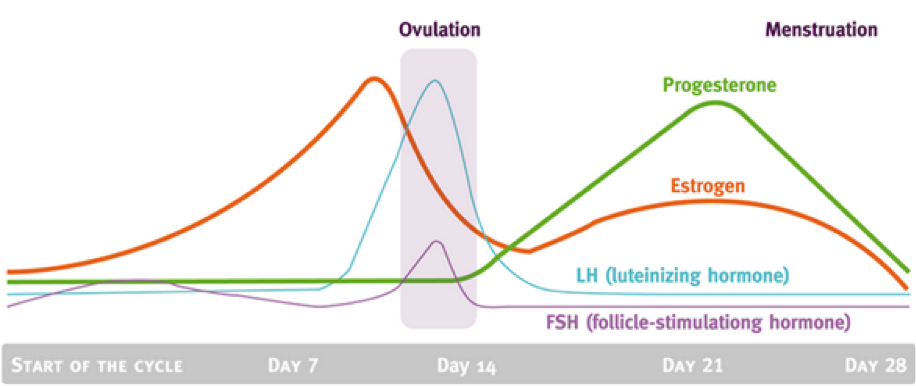
Phases of The Menstrual Cycle
The menstrual cycle occurs in two phases. The first phase is called the follicular phase. During this phase, estrogen increases in order to stimulate follicle growth. This phase starts the first day of your period, and ends when you ovulate.
The second phase is called the luteal phase. This is the time where progesterone increases, estrogen increases slightly, and both taper off if you aren’t pregnant. This phase starts the day after you ovulate, and goes until the day you start your period.
The first 4-5 days of the follicular phase when you are bleeding are known as the menstrual phase. In between the follicular phase and the luteal phase is the ovulation phase, which is when the ovary releases a mature egg cell.
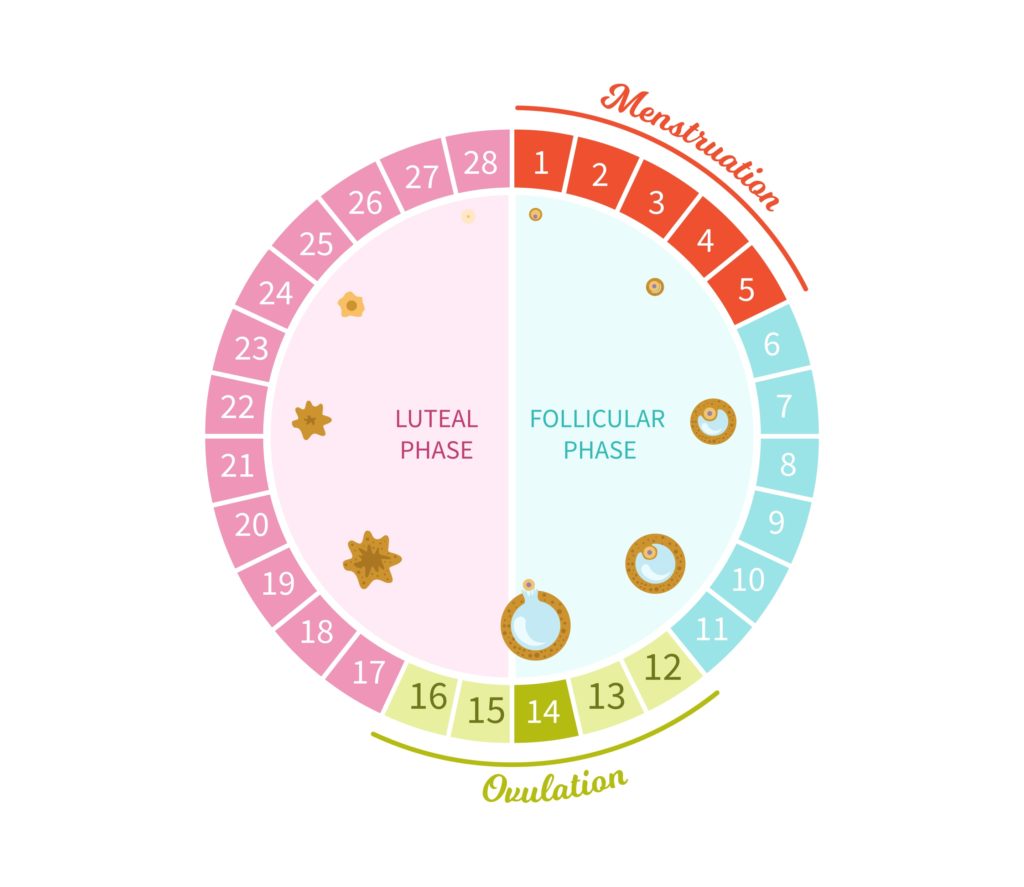
Cycle Syncing Your Food
So, how does cycle syncing your food work? Your hormone fluctuation influence things like insulin, metabolism, and detoxification pathways, so adapting your diet to your menstrual cycle can support your bodily processes.
First, there’s insulin. Insulin’s main job is to take glucose, or sugar from food, out of the bloodstream and put it into cells. Blood sugar needs to stay balanced for you to have steady energy. If your blood sugar is too low, you can feel faint and weak. Chronically high blood sugar can lead to issues like insulin resistance and Type 2 diabetes.
Both estrogen and progesterone influence insulin. Specifically, studies show estrogen improves insulin sensitivity, where as progesterone inhibits glucose uptake.
Second, research shows giving women extra serotonin-creating substances in the form of carbohydrates can relieve PMS symptoms. Carb-rich foods help boost serotonin levels, which may be why carb cravings increase for many women before menstruation.
Lastly, food greatly impacts your body’s ability to detoxify and eliminate used hormones. Your liver, gut, and kidneys help to excrete hormones. Detoxification is especially important during ovulation when estrogen peaks. If your liver is sluggish, estrogen can be reabsorbed and can lead to symptoms of estrogen dominance. Incorporating more detox-supporting foods during ovulation, like cruciferous vegetables and leafy greens, can support hormone balance overall.
While there are many ways your cycle can impact your diet, know that craving different foods at different times of the month is totally normal and biological.
Cycle Syncing Your Diet: How to Eat During Each Phase of Your Menstrual Cycle
Phase 1: The Menstrual Phase (Days 1-6)
What happens: While this is considered the beginning your cycle in Western medicine, it’s really the end result of your entire cycle to your body. This is when your hormone levels are at their lowest, which can make you feel more tired, moody, and irritable.
If you have a heavier flow or are prone to iron deficiency, you might experience low iron during your period. Also, what you eat during this phase can set the tone for your upcoming cycle.
Cycle Syncing Your Diet: Eating lots of nutrient-dense, healthy-fat-rich foods. Incorporate foods rich in omega-3 fatty acids, like salmon and cold water fish, as research shows omega-3 rich foods can help resolve PMS symptoms like cramping and bloating.
This is also the time to focus on warming, nourishing foods like soups and stews. Incorporate foods that are rich in heme iron, like grass-fed beef, bison, clams, and oysters, which can help provide your body with protein and fat to keep blood sugar stable and restore iron levels.
Vitamin C rich foods are also incredibly beneficial during this time, as iron uptake is enhanced by vitamin C. Also, your immune system is slightly down-regulated, so upping this powerful antioxidant can help you stay healthy. Incorporate citrus fruits like mandarines and limes, and vegetables rich in vitamin C like bell peppers and tomatoes. Because iron absorption can be inhibited by caffeine, this is also a great time to switch to decaf.
Food Plan: Easy Stovetop Chili, Garlic Butter Steak Bites and Potatoes, Healthy Zuppa Toscana, Sheet Pan Steak Fajitas, Healthy Sloppy Joes
Phase 2: The Follicular Phase (Days 7-12)
What happens: All of your hormones start to rise. It’s a time of new beginnings as you enter a new cycle. You start to have more energy, and your immune system is high functioning during this time.
Your body is more insulin sensitive, which means your body uses carbohydrates more efficiently.
Cycle Syncing Your Diet: As estrogen levels rise, bring in foods that support estrogen detoxification. Leafy greens and cruciferous vegetables, like kale, collard greens, cabbage, broccoli, and cauliflower are packed with a phytonutrient called diindolylmethane (DIM), which helps metabolize estrogen. Your body is also developing a dominant follicle, so it’s important to nourish your follicles with foods like avocado, almonds, and wild-caught seafood. These are all rich in vitamin E, which is found in follicular fluid and is important for egg maturation.
Due to increasing energy levels and a downshift in your metabolism, you may find you crave lighter, fresh foods. Eat plenty of protein and complex carbs, as you’ll need them to fuel higher intensity workouts. Because you are more insulin sensitive, your body uses carbohydrates more efficiently. Also, incorporate probiotic-rich foods like kombucha and sauerkraut, to help prime the microbiome and estrobolome (the bacteria in the gut that metabolize estrogen) for ovulation.
Food Plan: Healthy Beef and Broccoli Recipe, Healthy Chicken Broccoli Casserole, Santa Fe Salad, Sheet Pan Roasted Vegetables, Crispy Roasted Sweet Potatoes
Phase 3: The Ovulatory Phase (Days 13-16)
What happens: Your estrogen levels are surging, energy is high, and most women feel their mood is stable. You remain insulin sensitive, which means you’re using carbs effectively. Your metabolism is naturally a bit lower.
Because hormone levels are high, your detoxification organs need support, including your liver and kidneys. These both play a key role in breaking down and excreting old hormones.
Cycle Syncing Your Diet: Because estrogen is peaking, keep incorporating leafy greens and cruciferous vegetables that will support estrogen metabolism. During this time, it’s also important to support your liver with sulfur-rich foods, like pasture-raised eggs, onions, chicken, and broccoli. Your liver plays a big roll in the detoxification of hormones, so it needs some extra support.
Vitamin B is also important for this phase, as it helps support the release of an egg and aids in implantation. Many of the foods mentioned above are a great source of B vitamins, include dark, leafy greens and pasture-raised eggs. Other B vitamin-rich foods are spinach, chicken, and grass-fed beef. This phase is also the time to cut out the alcohol, as it can negatively impact estrogen detoxification.
Because you’re more insulin sensitive and have more energy, make sure eat plenty of carbohydrates, especially post workout.
Meals to Make: Sheet Pan Chicken Broccoli and Sweet Potatoes, Santa Fe Salad, Healthy Beef and Broccoli Recipe, Healthy Chicken Tikka Masala, Egg Roll in A Bowl
Phase 4: The Luteal Phase (Days 17-28)
What happens: Progesterone peaks and estrogen rises slightly. Then, hormone levels drop right before your period starts. This downward shift is responsible for PMS symptoms.
Research shows your resting metabolic rate naturally increase, as does your body temperature. This means you don’t just feel hungrier, you’re actually burning more calories during this phase—up to 300 calories more each day! At the same time, energy declines and you become less insulin sensitive. Your immune system also slightly downshifts.
Cycle Syncing Your Diet: Two specific nutrients are important during this phase: vitamin C and magnesium. Vitamin C is incredibly important for progesterone production. In fact, research shows that vitamin C significantly increases progesterone in women. This is important during this phase because many PMS symptoms can occur because of an imbalance of estrogen and progesterone, specifically estrogen dominance. Opt for foods rich in vitamin C, like organic strawberries, blueberries, and raspberries, and sweet potatoes.
Magnesium-rich foods like spinach and dark chocolate are also important for balancing fluid retention, reducing cravings, supporting hormone metabolism. Research shows magnesium supplements can reduce PMS/PMDD symptoms, so consider incorporating a magnesium supplement.
If you crave warm and comforting foods before you start your period, go with this flow. Starchy root vegetables like potatoes, pumpkin, and squash can be incredibly satisfying and may help to boost serotonin levels.
This is also a great time to incorporate healthy fats, as your body needs more calories and is less insulin sensitive. Fatty fish like salmon and grass-fed meats will support your body’s energy needs, and will help you flow right into a healthy menstruation phase.
Meals to Make: Thai Chicken Coconut Curry, Easy Stovetop Chili, Healthy Chicken Tikka Masala, Healthy Zuppa Toscana, Crispy Roasted Sweet Potatoes
Menstrual Cycle Foods: Guidelines, Not Rules
Cycle syncing your diet to your menstrual cycle is all about getting better in tune with your body and supporting proper hormone function and fertility. Remember: these are guidelines and suggestions, not hard and fast rules! Go with your flow, and do what feels right for you as you use this template for syncing your food to your menstrual cycle.
I’m confident that once you go with this flow, you’ll notice improvement in how you feel, your hormones, and your overall health.
More Articles:
- Cycle Syncing Your Skincare Routine to Stop Hormonal Acne and Breakouts
- Cycle Syncing Workouts: How to Exercise in Each Phase of Your Menstrual Cycle
- Natural Remedies For PMS
- Natural Treatments for PMDD
- How to Get Your Period Back Naturally
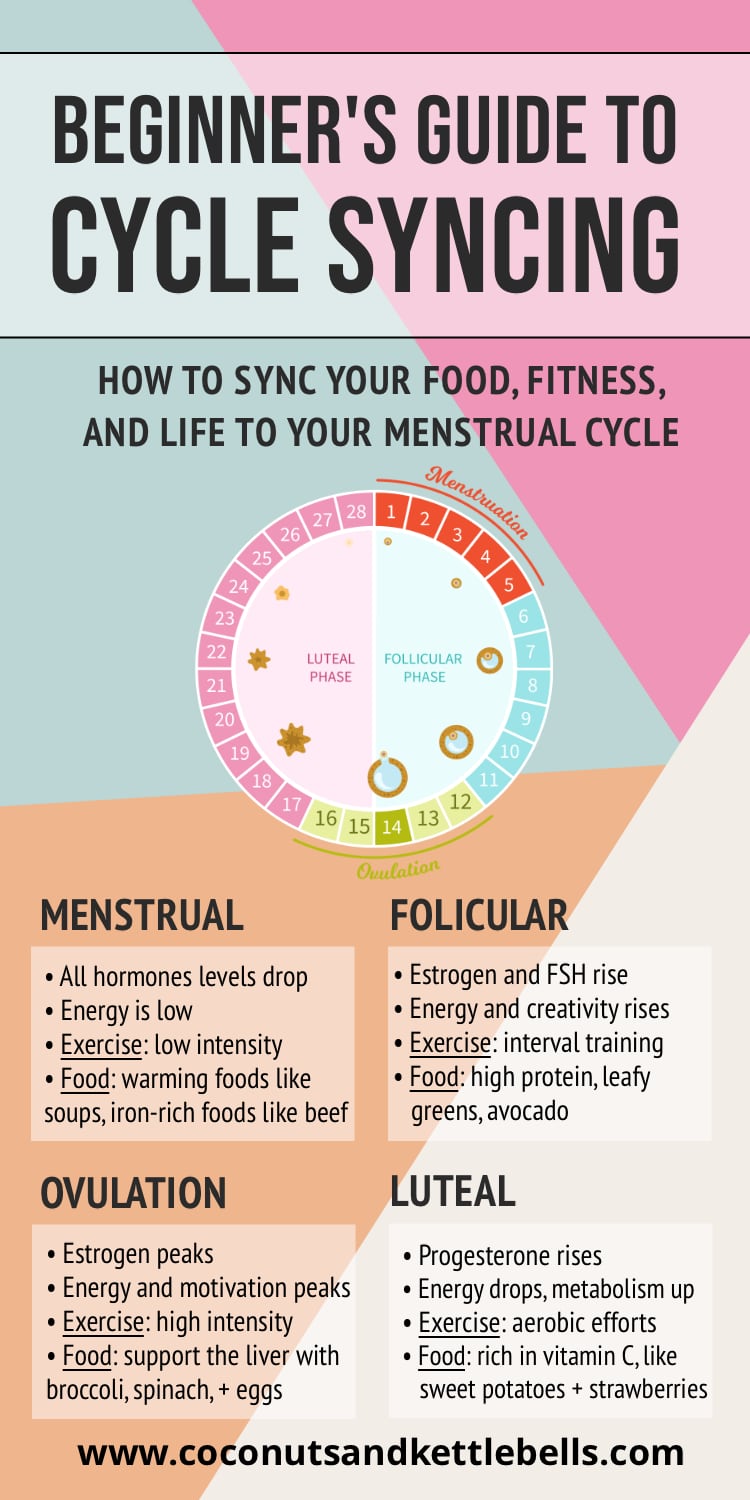
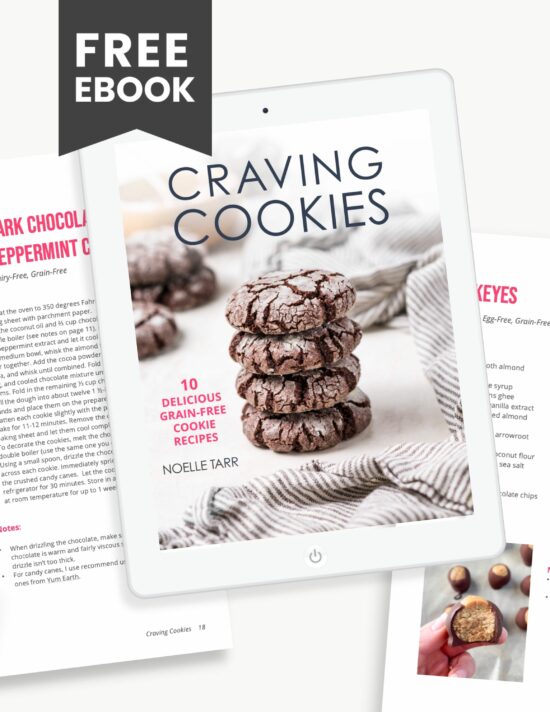
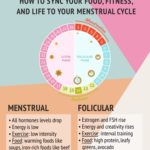

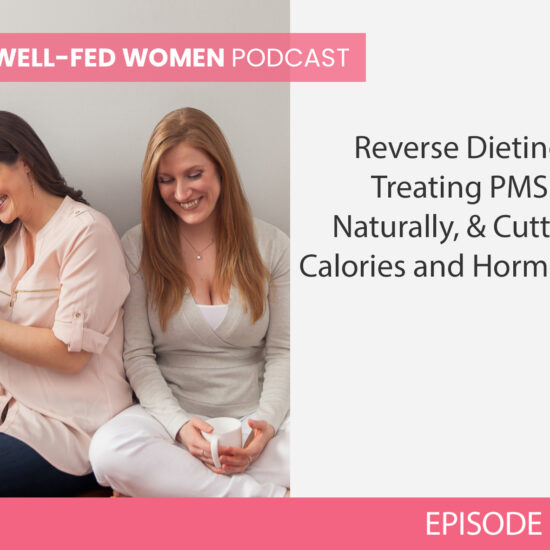
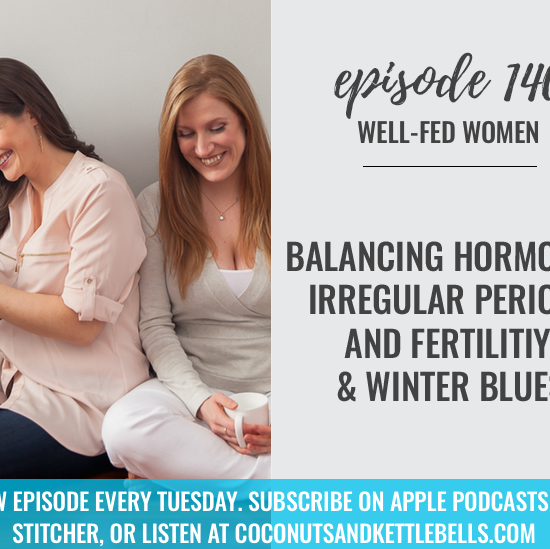
Allie says
This is so fascinating! I just have a couple of questions… I’m about to start a frozen embryo transfer cycle (I was diagnosed with hypothalamic amenorrhea and we used IVF to have our daughter; now we’re going to transfer another embryo to try for baby #2). My RE is going to use increasing doses of estrogen and progesterone to mimic a natural cycle. I’m just wondering if I could still do cycle syncing even though it’s not a real cycle? Would the DIM in the foods still help metabolize synthetic estrogen (and hopefully minimize side effects)? Thank you!
Noelle Tarr, NTP, CPT says
Yes you absolutely could! You are simply supporting your body with these foods. Good luck!
kris says
Why do I sleep SOOOOO bad the two to three nights before my cycle and how could I help that?
Noelle Tarr, NTP, CPT says
It’s definitely due to the hormonal shits/the drop. Possibly an estrogen dominance. Cycle syncing can DEFINITELY help!
KdZC says
How should we be eating while breastfeeding when your cycle hasn’t returned yet? Any advice for losing some of the weight from pregnancy at the same time.
Noelle Tarr, NTP, CPT says
Hey there! Because your cycle hasn’t returned, it’s a little hard to do cycle syncing, but you can absolutely track your cycle using the Fertility Awareness Method, and then you’ll start to get some clues with temperature changes when your period is about to return! I would recommend eating plenty leafy greens, cruciferous vegetables, plenty of carbohydrates. Focus on nutrient replenishment, hydration, and getting enough calories. For many women, it’s normal to not go back to where you were before, especially while still breastfeeding. Give yourself time and grace, and as you start to have more energy, stamina, and SLEEP, you can get back into your normal workout routine and cycle syncing.
Heather says
I am 49 and premenopausal. I think this would be life changing. Is this something that would help with my symptoms?
Noelle Tarr, NTP, CPT says
Hey Heather! Possibly, depending on how irregular your cycles are. For perimenopause symptoms, I have a pretty comprehensive article about natural remedies for perimenopause symptoms I think you’ll find helpful. Read it here: Natural Remedies for Perimenopause Symptoms: Supplements, Treatments, and Food
hailee piendl says
I love this Post! it is very informative and its great women are stepping into their power.
Emily says
Hello.
I’d really like to try and implement this but is it possible to do as a vegetarian? Is it seems like most of the suggested food are meat. Do you have any suggestions?
Noelle Tarr, NTP, CPT says
Hi Emily! You could start with eating the vegetarian foods suggested. I personally struggled quite a bit on a vegetarian diet, and after a decade, I brought back in meat for specific nutrients. It’s why I now focus on foods for nutrients and make recommendations to specific meats when it comes to things like heme iron and b12. Check out my interview with Alisa Vitti here: #274: Biohacking Your Hormones With Alisa Vitti Of Flo Living.
Rebecca says
You can most certainly do this while being a vegetarian! The follicular phase is best for lots of fermented foods, sprouted foods, oats and citrus fruits. The ovulatory phase is great to eat lighter grains, and load up on fruits and veggies – focus more on smoothies, juices and raw foods. The luteal phase is great for slow-burning carbs and root vegetables, as well as squashes. The menstrual phase is the phase to increase protein and healthy fats; beets, sea vegetables and certain beans such as kidney, adzuki and black.
I would encourage you to check out the book In the Flo by Alissa Vitti as another starting point 🙂
Dee says
Why is grass fed beef always mentioned but never grass fed beef LIVER. Most nutrient dense food on planet earth and it never gets mentioned. Also it’s it effectively a liver cleanse in itself m. Definitely worth a mention